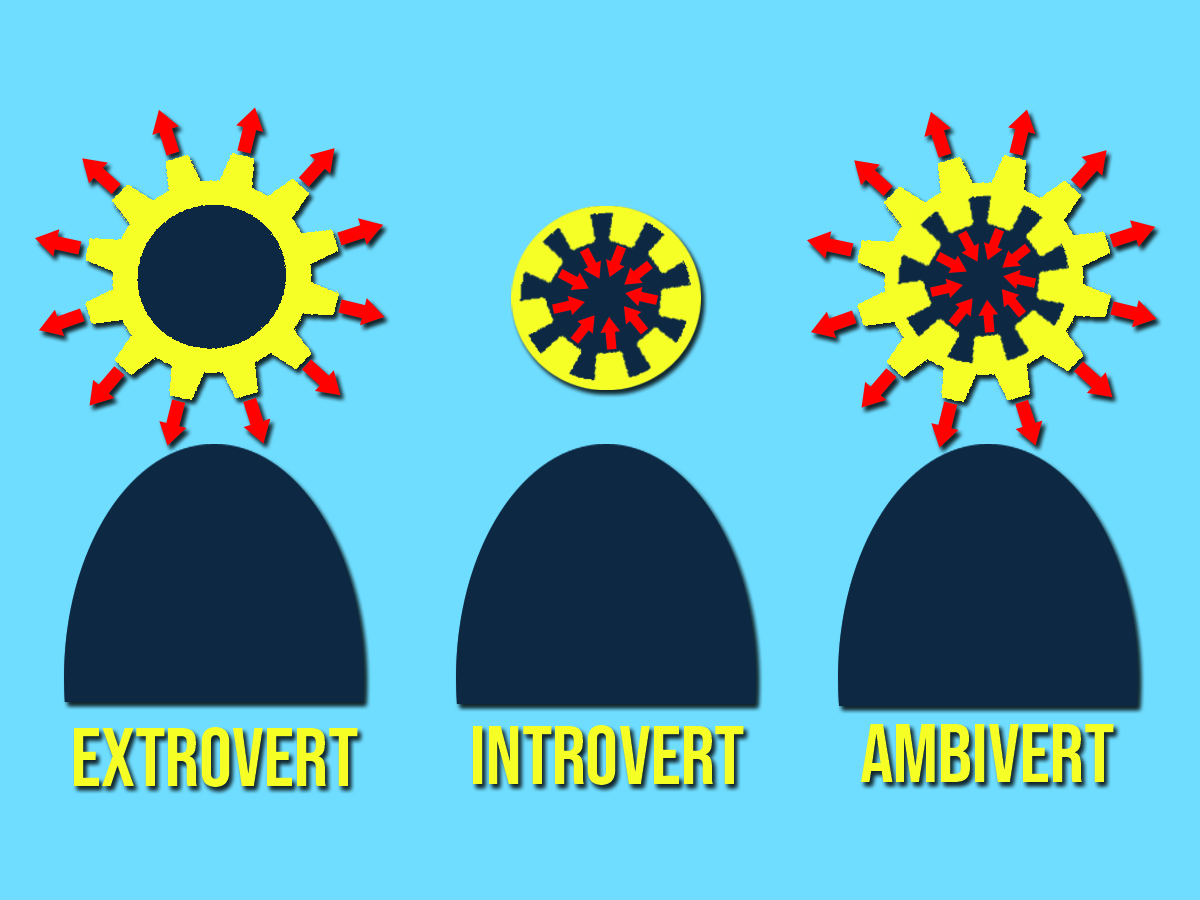By Alyson Peabody, News Editor
Carl Jung never intended for introversion and extroversion to be recognized as prominent personality types. Jung, a Swiss psychoanalyst and psychiatrist, invented the terms ‘introvert’ and ‘extrovert’ in the 1920s to define the expression of the “Big Five” personality traits: openness, conscientiousness, extraversion, agreeableness and neuroticism. Taking the Myers-Briggs test determines where a person falls on this scale.
The mythical distinction between introversion and extroversion is thought to be how people recharge their energy. A common misconception is that introverts require solitude to decompress after a day of socializing while extroverts seek out group gatherings.
Quiet by Susan Cain distinguishes the two personality types based on a person’s sensitivity to stimulation. “If you’re an introvert, you’re more prone to being overstimulated by intense or prolonged social interaction,” Cain wrote. “Extroverts crave stimulating activities like skydiving and stimulating beverages sold at Starbucks. Introverts are more likely to retreat to a quiet place, but they’re very happy to bring someone else with them.”
Celebrities are often thought to all be spotlight-loving extroverts. However, self-proclaimed introverts have publically shared their passions from Steven Spielberg to Audrey Hepburn to J.K. Rowling to Sir Isaac Newton.
Jung conceded that a third group existed that was “the most numerous and includes the less differentiated normal man.” This means that introverts and extroverts make up a minority of the population.
If this is true, what does this make the rest of the population?
The answer: Ambiverts.
Humans are nuanced creatures that respond to others and environmental stimulation in different ways, depending on the circumstances. Ambiverts can have tendencies that lean toward extroversion or introversion.
The reason ambiversion becomes buried in American culture is due to the American glorification of extroversion that started during the turn of the twentieth century. Hoards of people were moving to urban areas from rural areas. This shift caused a social change. Suddenly, people that had built reputations upon years of family loyalty, hard work and honor in their small towns couldn’t compete with cut-throat executives in large cities, like New York.
Orison Swett Marden wrote Character: The Grandest Thing in the World in 1899 which gave personality advice on how to be a successful businessman (and yes, it was oriented toward men).
The qualities Marden emphasized were:
Citizenship
Duty
Work
Golden deeds
Honor
Reputation
Morals
Manners
Integrity
By 1921, Marden wrote another book titled Masterful Personality that followed the changing times:
Magnetic
Fascinating
Stunning
Attractive
Glowing
Dominant
Forceful
Energetic
By Marden’s new standards, someone is either born with these qualities or they lose out. Businessmen had to learn to act, dress, and carry themselves in a specific way to fit the standard norm. Otherwise, they had to find a new profession.
“Much like American society, business organizations are dictated by norms. Norms are established for customers and employees alike to follow in order to create functional structures,” wrote Dr. Kathleen Marker in her article, “Social Norms in Culture and Business.”
The advertising industry profits from our societal interest in self-presentation. 1920s ads, such as Williams Shaving Cream said “Let your face reflect confidence, not worry! It’s the ‘look’ of you by which you are judged most often.” Contemporary makeup ads do the same thing to bolster confidence into anyone who applies Kylie Jenner’s liquid lipstick or Maybelline products to look like Gigi Hadid.
American culture today is rooted in this need for independence that is shackled by societal validation. Superficial character is prevalent throughout social media. People draw each other in using physical attraction and strong language to catch attention. This mentality leads to character judgements about people who don’t try to sell themselves, speak the loudest or make grand gestures to prove their strength of character.

